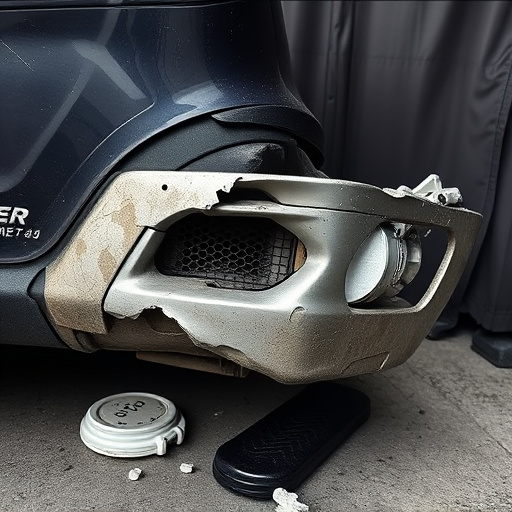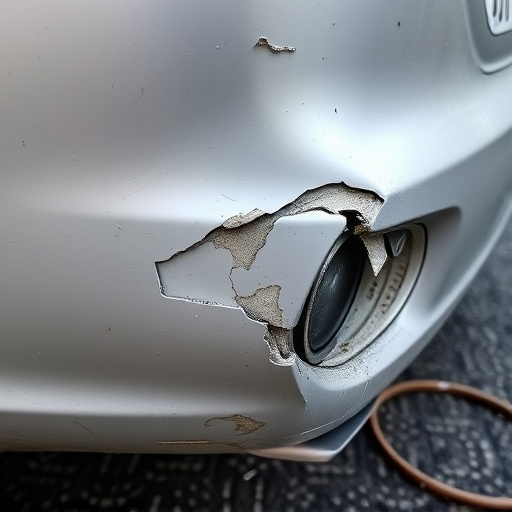Tesla's thermal management check is vital for maintaining vehicle performance and efficiency, focusing on liquid-cooled electronics. This proactive approach uses sophisticated sensors and algorithms to prevent overheating, prolonging component lifespan and reducing repair needs like fender or glass replacement. Regular checks are crucial for identifying issues, ensuring longevity, and avoiding costly collision damage repairs related to heat failure.
“Tesla vehicles are renowned for their cutting-edge technology, and efficient thermal management is key to maintaining optimal performance. This article delves into the intricate world of Tesla’s thermal management systems and the importance of liquid-cooled electronics testing. We explore how these advanced systems regulate temperature, ensuring the longevity of high-performance components. From understanding the basics to performing comprehensive checks, this guide provides valuable insights for Tesla owners and enthusiasts interested in keeping their vehicles at peak efficiency.”
- Understanding Tesla's Thermal Management Systems
- The Role of Liquid Cooling in Electronics Testing
- Comprehensive Checks for Optimal Performance
Understanding Tesla's Thermal Management Systems

Tesla vehicles are renowned for their cutting-edge technology and innovative design, but did you know that efficient thermal management is a key component ensuring optimal performance? Understanding Tesla’s Thermal Management Systems involves appreciating how these cars cleverly regulate internal temperatures to protect sensitive electronics. From power trains to infotainment systems, liquid cooling and advanced heat dissipation techniques play a vital role in keeping components within safe operating ranges, preventing overheating and associated car damage repair.
This careful thermal management is especially crucial for electric vehicles (EVs), where the high-density energy storage systems generate significant heat. Tesla employs sophisticated sensors and control algorithms to monitor temperature fluctuations in real time, allowing for proactive measures. This includes directing coolant flow precisely where needed, ensuring efficient cooling of vital components without unnecessary energy consumption. Moreover, by minimizing thermal stress, these systems contribute to prolonging the lifespan of EV batteries and other sensitive parts, reducing the need for expensive fender repair or auto glass replacement down the line.
The Role of Liquid Cooling in Electronics Testing

In the realm of modern electronics testing, especially within high-performance systems like Tesla vehicles, liquid cooling plays a pivotal role in ensuring optimal thermal management. As electronic components continue to shrink and power densities increase, efficient heat dissipation becomes crucial for maintaining system reliability and performance over time. Unlike air-cooled counterparts, liquid-cooled systems offer enhanced capabilities by facilitating better heat transfer rates, enabling more compact designs, and providing improved stability under demanding conditions.
During a Tesla thermal management check, the focus on liquid-cooled electronics testing is paramount. This meticulous process involves scrutinizing cooling systems designed to circulate specialized liquids, often water with added antifreeze, to absorb and disperse heat generated by critical electronic components. By mimicking real-world operating conditions, these tests reveal potential bottlenecks, ensure longevity, and highlight any vulnerabilities in the thermal management strategy, ultimately contributing to safer and more efficient automotive repair services. Moreover, understanding the intricate interplay between liquid cooling and electronic performance is key to preventing issues like collision damage repair, where heat-related failures could have severe consequences.
Comprehensive Checks for Optimal Performance

A Tesla thermal management check is an essential component of maintaining optimal performance for your electric vehicle. This comprehensive assessment goes beyond basic temperature readings to uncover any inefficiencies in the car’s cooling system, which is particularly vital for liquid-cooled electronics. By meticulously scrutinizing every aspect, from radiators and fans to heat exchangers, technicians can identify potential issues that might lead to premature component failure or reduced energy efficiency.
Regular thermal management checks as part of auto maintenance routines are crucial in preventing costly autobody repairs down the line. Early detection of cooling system problems ensures timely repairs, allowing drivers to enjoy their Tesla’s smooth operation without worrying about unexpected breakdowns. Just like regular car paint repair sessions, keeping an eye on your vehicle’s thermal health is a proactive step towards longevity and reliability.
Tesla’s commitment to cutting-edge technology demands rigorous testing, especially in thermal management. By employing liquid-cooled electronics and conducting thorough checks, the company ensures optimal performance and reliability in their vehicles. This comprehensive approach to thermal management is a key aspect that sets Tesla apart in the automotive industry. A meticulous Tesla thermal management check is therefore essential for maintaining the superior standards expected from this innovative brand.














